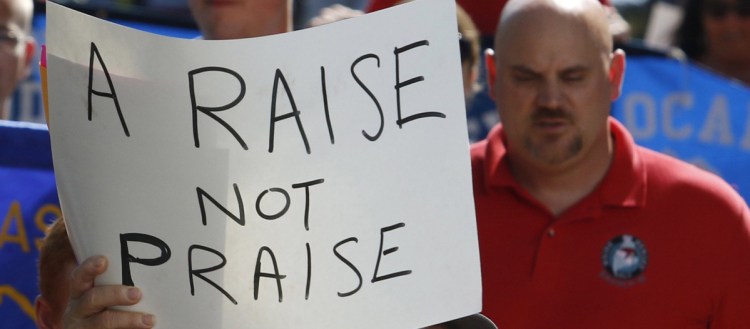We supported the minimum-wage referendum in 2016 because after nearly 50 years of falling behind, low-income Mainers needed a pay raise. We supported it because raising the minimum wage helps low-wage earners – many of them family breadwinners and seniors – buy the staples necessary for a stable life, injecting millions of dollars directly into the Maine economy in the process.
A year after the first wage increase went into effect, it appears that is exactly what is happening. Meanwhile, there is little evidence that the dire predictions of opponents are coming true.
Still, the LePage administration and some lawmakers want to change the law. Once again, they are claiming that the consequences of further increases, particularly in rural Maine, will be great. Once again, they have little evidence to back up those claims.
The change comes in the form of L.D. 1757, from Rep. Joel Stetkis, R-Canaan, with backing from the governor.
The bill would reduce the minimum wage from $10 per hour to $9 per hour, and cut the annual increases from $1 to 50 cents, topping out at $11 per hour in 2021, where it would stay. There would be no more annual cost-of-living adjustments, which were put into law as part of the 2016 referendum. The bill would also create a lower training wage for young adult workers and for workers under 18.
Proponents of the bill say that the rapid increase of the minimum wage is a burden on small-business owners, who are being forced to cut hours and jobs, and on seniors living with fixed incomes, who will struggle to pay rising prices brought on by increasing labor costs. They say the law is particularly onerous in rural Maine, where average wages are lower and thus will be forced to increase more dramatically.
Creating a training and youth wage is a license to underpay and exploit young workers. Eliminating cost-of-living adjustments would eventually leave low-wage workers in the same position that precipitated the 2016 law – with earnings that lose purchasing power to inflation each year.
But the meat of the bill are the cutbacks to the wage itself, for which there is no justification.
When the minimum wage went from $7.50 an hour to $9 an hour on Jan. 1, 2017, about 103,000 Mainers received a direct pay raise, according to the left-leaning Maine Center for Economic Policy. The minimum-wage increase help grow total wages in Maine by 4.7 percent year over year, the largest such increase since before the 2008 recession. Earlier this month, 59,000 Mainers received a raise when the minimum wage rose again, to $10 an hour.
Meanwhile, Maine’s unemployment is at historically low levels. Clearly, the higher minimum wage has not hurt job growth.
It’s harder to analyze the effect on state-level prices, but research before the 2016 referendum predicted an increase of only 0.9 percent over four years would result from its passage. Another study showed a 25 percent wage increase in San Jose, California, led to just a 1.5 percent price increase.
In fact, most analyses say the same thing: Increasing the minimum wage places a small burden on all consumers through, at most, slight increases in price, while shifting much-needed money to low-income workers who are in or near poverty despite working.
Some businesses adapt, others don’t. But overall, the good outweighs the bad; the predictions of wide-scale layoffs and business closings just have not materialized.
Of course, rural Maine is not San Jose, or Los Angeles, or Seattle – large cities with robust economies where wage increases have been mostly productive. It is reasonable to think that mandated wage increases will have a greater impact in areas where wages are lower, unemployment higher and the labor market less tight. It bears close watching.
But what we have seen so far shows that raising the minimum wage is an overall win – up to a point. Maine’s experience clearly shows we have not reached that point, and until we do, lawmakers should keep the law the way it is.
Send questions/comments to the editors.



Comments are no longer available on this story